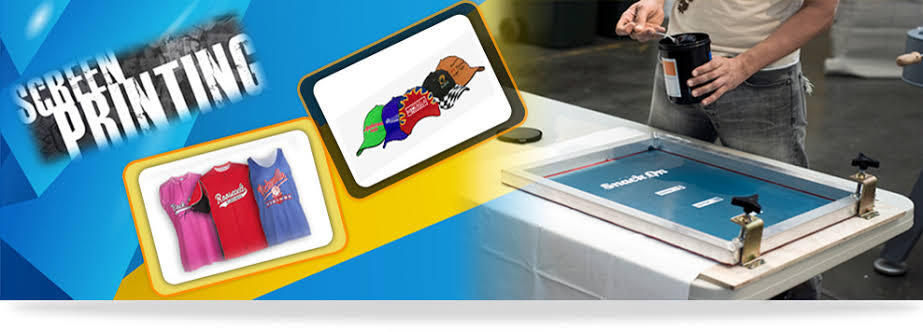WHAT IS SCREEN PRINTING
Screen printing, also known as silk screening or serigraphy, is a printing technique used to create designs on various surfaces, including:
1. Fabrics (t-shirts, hoodies, etc.)
2. Paper (posters, stickers, etc.)
3. Plastics (signs, banners, etc.)
4. Wood
5. Metal
The process involves:
1. Creating a stencil: A design is printed onto a transparent sheet, called a film, and then applied to a screen (a frame with a mesh material).
2. Inking the screen: Ink is poured onto the screen, and a squeegee (a rubber blade) is used to push the ink through the mesh, onto the surface below.
3. Printing the design: The screen is placed on top of the surface, and the squeegee is used to spread the ink, creating the design.
4. Drying and curing: The ink is allowed to dry and cure, fixing the design onto the surface.
It comes with its own set of advantages and disadvantages:
WHY SCREEN PRINTING IS GOOD FOR USE ON T-SHIRTS?
1. Durability: Screen-printed designs are generally very durable and can withstand many washes without significant fading or cracking.
3. Cost-Effective for Bulk: For large orders, screen printing can be more cost-effective compared to other methods like direct-to-garment (DTG) printing or embroidery. The setup costs are higher, but the per-unit cost drops significantly with volume.
4. Versatility: It works well on a variety of fabrics and materials, not just cotton. You can print on different types of textiles, including polyester and blends.
5. Consistency: Once set up, screen printing can produce consistent results across multiple shirts, making it ideal for bulk orders where uniformity is important.
6. Soft Finish: Ink is absorbed into the fabric, creating a soft, comfortable finish.
WHY WOULD AN ALTERNATIVE METHOD OF T-SHIRT PRINTING METHOD BE PREFERED OVER SCREEN PRINTING?
1. Setup Costs: The initial setup for screen printing can be expensive, especially for small runs or one-off designs. It requires creating screens and setting up the equipment, which can be costly.
2. Limited Color Range: Each screen can only print one color, so multi-color designs require multiple screens and additional setup time. This can make the process more complex and expensive.
3. Detailed Designs: Extremely detailed designs or those with gradients might not reproduce well with screen printing, as it works best with solid colors and simple designs.
4. Environmental Concerns: Screen printing involves the use of inks and chemicals that can be harmful to the environment. However, there are eco-friendly options available, but they might come at a higher cost.
5. Time-consuming Process: The setup time for screen printing can be lengthy, especially for complex designs or smaller runs. This might not be ideal for projects with tight deadlines.
6. Order Quantities: Can be expensive for small or one-off orders.
7. Skill and Experience: Achieving high-quality prints requires expertise as compared to DTF Printing.
In summary, screen printing is a great choice for large orders with simple, vibrant designs where durability and cost-effectiveness are key. However, for small runs, intricate designs, or environmentally-conscious projects, other methods might be more suitable.

